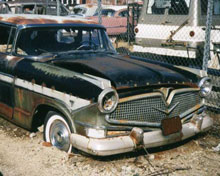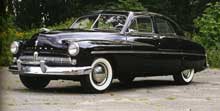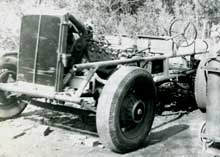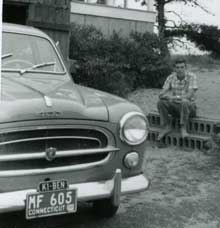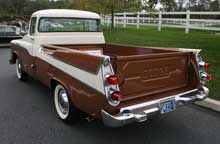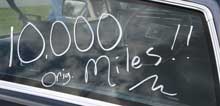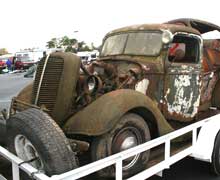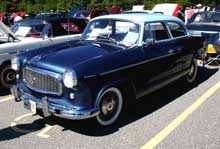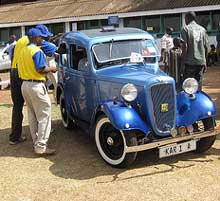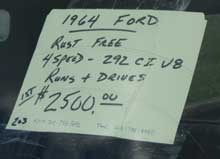The CarPort went live just five years ago this week. This post makes 255 features in that time, just shy of one per week for the entire period. I’m not a great fan of “best of” lists, but I do wallow in nostalgia now and then, so please indulge me while I reflect on the CarPort’s first half-decade.
We launched with a piece on French flatheads, something I had intended to use in print journalism before my principal outlet canceled my column. Who knew that the Ford flathead was being produced for Gallic armies right into the 1970s…
We’ve highlighted many discoveries of Wayne Graefen, our Texas Ranger, as well as those of St. Louis Bureau Chief Fred Summers. Dennis David has been a ready source of sad Saabs and ostracized Opels, and we shared several readers’ cars, like Frank McMullen’s DeSoto and Michael Della Gala’s Barnette Chevy ambulance. I was sad to learn of the sudden passing, this last July, of faithful follower Randy Poole, before he was able to complete much work on his DeSoto Suburban.
We’ve covered auto events from Greenwich to Hershey to Amelia to Beaulieu, even Paris and Nairobi. Notable scoops have included the Ghia Centurion and Alain Cerf’s Cugnot replica, and along the way I’ve introduced you to several members of my family and some of the cars in their lives.
We can take satisfaction, too, in the destiny of some of our featured vehicles. The Wayward Bus, for example, is now being restored and I’m hoping to show it again when it’s finished. Others have been rescued, whether for restoration or parts.
Steady CarPorters will have noticed that I take the term “automotive” pretty broadly, including such peripheral vehicles as snowmobiles and agricultural machinery. In fact, the single most popular item, judging from reader comments, was the posting on Gravely tractors.
So, with thanks to all who have had a part in making the CarPort what it is, we look forward to another five years and more.

